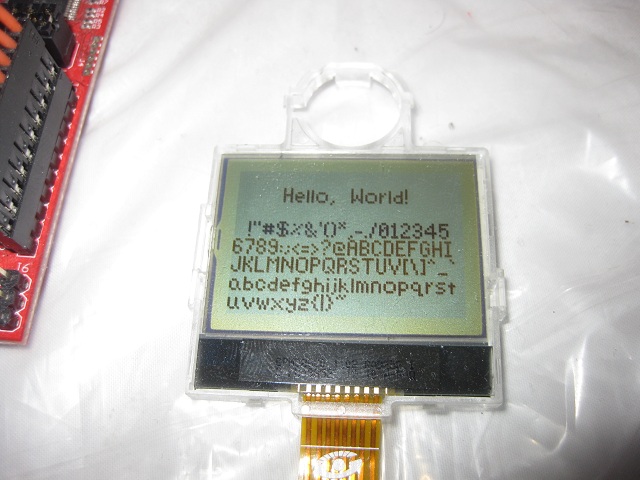As I mentioned in the last post about this project, I added a second MSP430 because the firmware was getting too large. In the end hardware UART turned out to be a good choice for communication between them. It works very fast and is reliable. The first MSP430 is responsible for reading the keyboard, controlling the LCD, handling the interface, and performing checks such as division by zero before passing on the addresses of the values to be calculated to the second MSP430. The firmware for the first chip comes to a little over 13KB. The second MSP430 does all the actual calculating since it is connected to the SRAM. Its firmware is about 10KB.
The software part of this project is almost finished. One thing I added was a settings page. The accuracy of calculations can be set anywhere between 6 and 32 decimal places. There are also options to use scientific notation and switch between degrees and radians for trig functions. The only things left to add are a battery meter and support for two stacks. A second stack is not really necessary but as it is now, only one half of the 128KB SRAM is usable since the 17th address pin is not hooked up. I plan to add a button so that the second half of memory can be used as a separate stack.
Although I planned on adding programming features at the beginning, I may not have time. The 43oh forum is having a project of the month competition I would like to enter this project in and I will need to hurry to finish putting together the hardware and making a case for it. If there is time left at the end of the month I may add a simple key stroke programming mode. It is a little disappointing that I did not get to this but on the other hand, it is convenient to have a firm end to this project. It would be easy to keep adding features but even now I feel like I have stretched the project beyond what the hardware can reasonably handle. I have plans for other calculators that will be programmable but they will use a more powerful chip than the MSP430G2553 and they won't use SRAM controlled by shift registers.
One change I made to the hardware was to use a different LCD. The new LCD is also 20x4 but it was much cheaper. The old LCD was quite expensive and I would like to keep using it rather than commit it to this project. The new LCD is 10cm wide instead of 8cm like the old one so I decided to turn the keypad long ways to save room. Here is the layout I plan to use:
The software part of this project is almost finished. One thing I added was a settings page. The accuracy of calculations can be set anywhere between 6 and 32 decimal places. There are also options to use scientific notation and switch between degrees and radians for trig functions. The only things left to add are a battery meter and support for two stacks. A second stack is not really necessary but as it is now, only one half of the 128KB SRAM is usable since the 17th address pin is not hooked up. I plan to add a button so that the second half of memory can be used as a separate stack.
Although I planned on adding programming features at the beginning, I may not have time. The 43oh forum is having a project of the month competition I would like to enter this project in and I will need to hurry to finish putting together the hardware and making a case for it. If there is time left at the end of the month I may add a simple key stroke programming mode. It is a little disappointing that I did not get to this but on the other hand, it is convenient to have a firm end to this project. It would be easy to keep adding features but even now I feel like I have stretched the project beyond what the hardware can reasonably handle. I have plans for other calculators that will be programmable but they will use a more powerful chip than the MSP430G2553 and they won't use SRAM controlled by shift registers.
One change I made to the hardware was to use a different LCD. The new LCD is also 20x4 but it was much cheaper. The old LCD was quite expensive and I would like to keep using it rather than commit it to this project. The new LCD is 10cm wide instead of 8cm like the old one so I decided to turn the keypad long ways to save room. Here is the layout I plan to use:





















